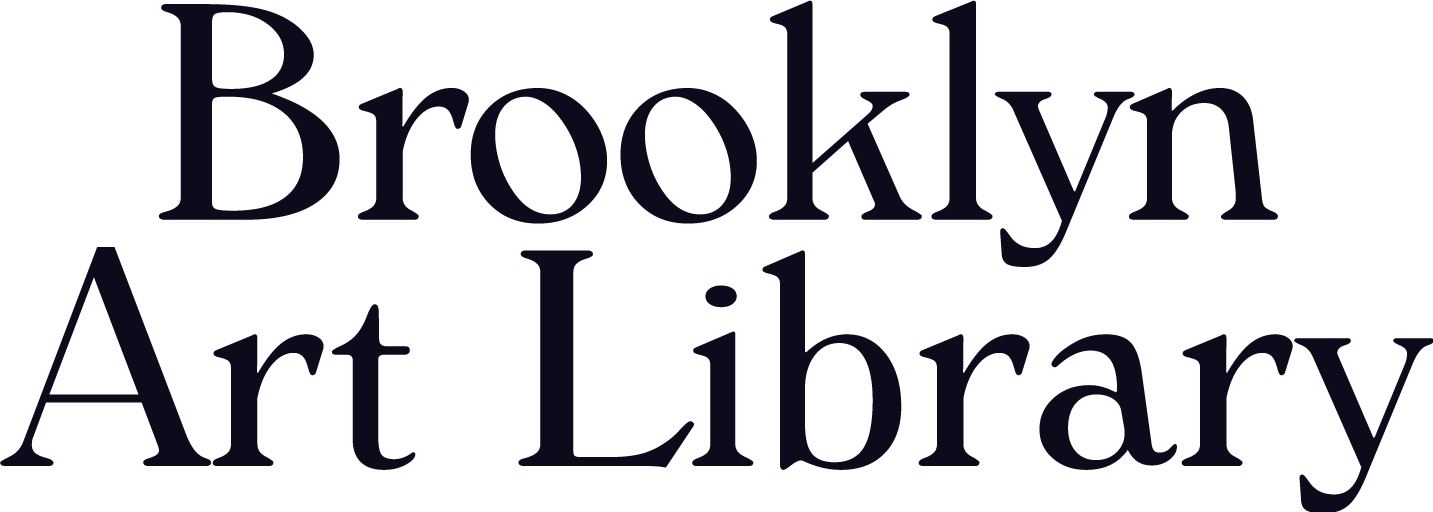Beyond the Page: Rodney Ewing
Rodney Ewing is a San Francisco-based artist and educator whose work addresses themes such as identity, history and diaspora. Rodney’s Sketchbook I write the pictures features portraits of individuals from his childhood and documents overlapping moments in time. Read on to learn more about Rodney’s process and other bodies of work.
Behind the Lines, 31” x 29”
Tell us about yourself!
I am a working artist and educator. I have been living in the Bay Area for 27 years.
When were you first introduced to art? How has your work evolved over the years?
Being introduced to art arrived in several stages; My father was my first influence, by introducing me to comic books as a child. Not only did I read them but I became so fascinated by the images, I began to draw them. These books became my first art teachers. I was also fortunate enough to attend many schools that had great art classes growing up.
When did you participate in the Sketchbook Project? What was that process like for you?
I think my submission was in 2013 after visiting the art library the previous summer. I was really inspired by all the various books I saw! The process was a natural extension of my practice. I have been keeping sketchbooks since I was a teenager and I continue to use them today. The only difference with this process was that I gave it to the library and I don’t have it for future reference.
I write the pictures , 2015
Can you tell us about the people you chose to portray in your sketchbook? What is the significance of the numbers and text you chose to include?
For that sketchbook, they were based on people I see during my morning commute, or in my neighborhood. Sometimes memory comes into play with the portraits, trying to remember childhood friends faces. I moved around a lot as a kid, so those recollections are important to me. The numbers and text originated from another project called “Days and Occasions”. I was looking for a new way to explore narrative in my work, especially the observations that happen around us every day. So, the text represents those events that I am recording, and the time is what happens between those minutes and seconds.
What are the major themes you address across your body of work? How do the mediums you work in relate to these themes?
Some of the themes I address in my work revolve around identity, race, memory, and place. When it comes to mediums, I always try to find the best one to communicate those ideas. That means I’m working across a broad spectrum of materials…I think I am what they call “interdisciplinary”. But I just like to make things!
The Discord of Gospels, 29.50” x 33.25”
How does history inform your bodies of work and understanding of the function of art?
Ye, history does inform many of my projects, but specifically the marginalized aspects of history, where individual or mass accounts are not accounted for in mainstream history, I feel these omissions not only hurt the owners of them, but also those who could use that knowledge to enrich their existence. I think art is a medium that can work in conjunction with others to create platforms where these stories can be presented in a way that people would not expect; art can allow people to make connections to the larger world that they normally would not expect.
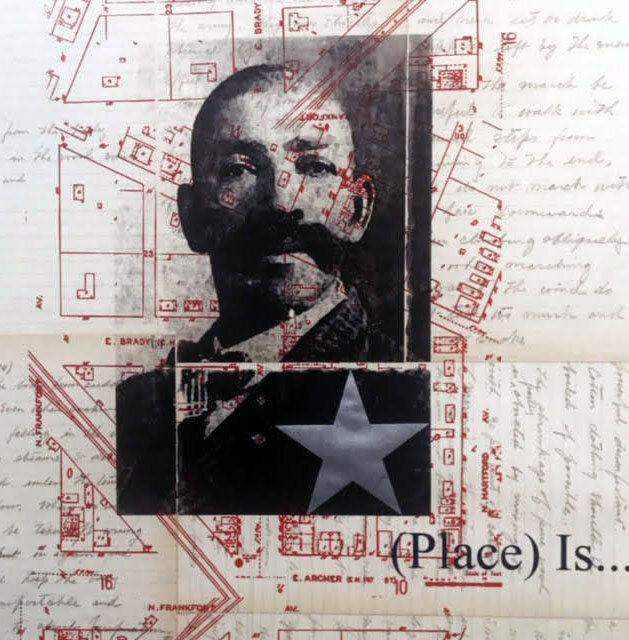
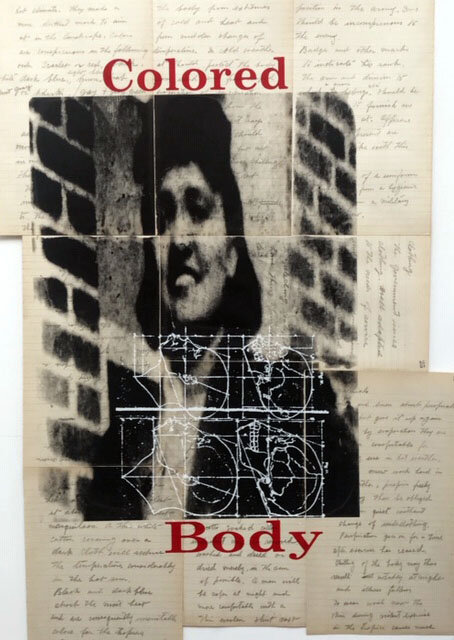
How does research play into your process? Where do you source imagery for your projects and prints? Research plays a huge part of my process, not only for sourcing imagery, but understanding the subject so that I can make sincere work…that is making work or being part of something that is larger than myself. My imagery comes from a variety of searches that range from archives of public libraries to internet sources.
Within Without, 32.5” x 31”
I am particularly drawn to the materials and installation methods in your exhibitions The Devil Finds Work and Between Walls and Ceilings, can you tell us more about your process creating 3D work and how the materials and formal elements relate to your 2D work?
With “Between Walls and Ceilings”, that body of work was created during a local residency called Recology. With that residency 90% of what you make has to be sourced from the city dump that is on site. I had a different plan walking into that residency, I thought I was going to make wood cuts, but I soon realized that I was gathering old building materials. These materials for me represented the diaspora and gentrification that is currently happening in San Francisco. That body of work and exhibition was a way for me to honor the materials and their history. I re-discovered how much I like to build objects and it pushed me to think in new terms. With the “Devil Finds Work”, the materials were tied closely to the concept. The idea was to create a series of children’s blocks that illustrated the different lessons that black children have to learn versus their white counterparts. This project was my way of grieving the loss of innocence in the black community as well as my frustration at not knowing what advice to provide for black youth today in regards to their safety. With this work the materials were pretty straight forward, I knew I wanted to create large -scale wooden blocks that were the same as their smaller counterparts. Many of the materials I learned to use in my 2-D process were also applied to my 3-D work. Using them in my 3-D process allowed me to expand my practice.
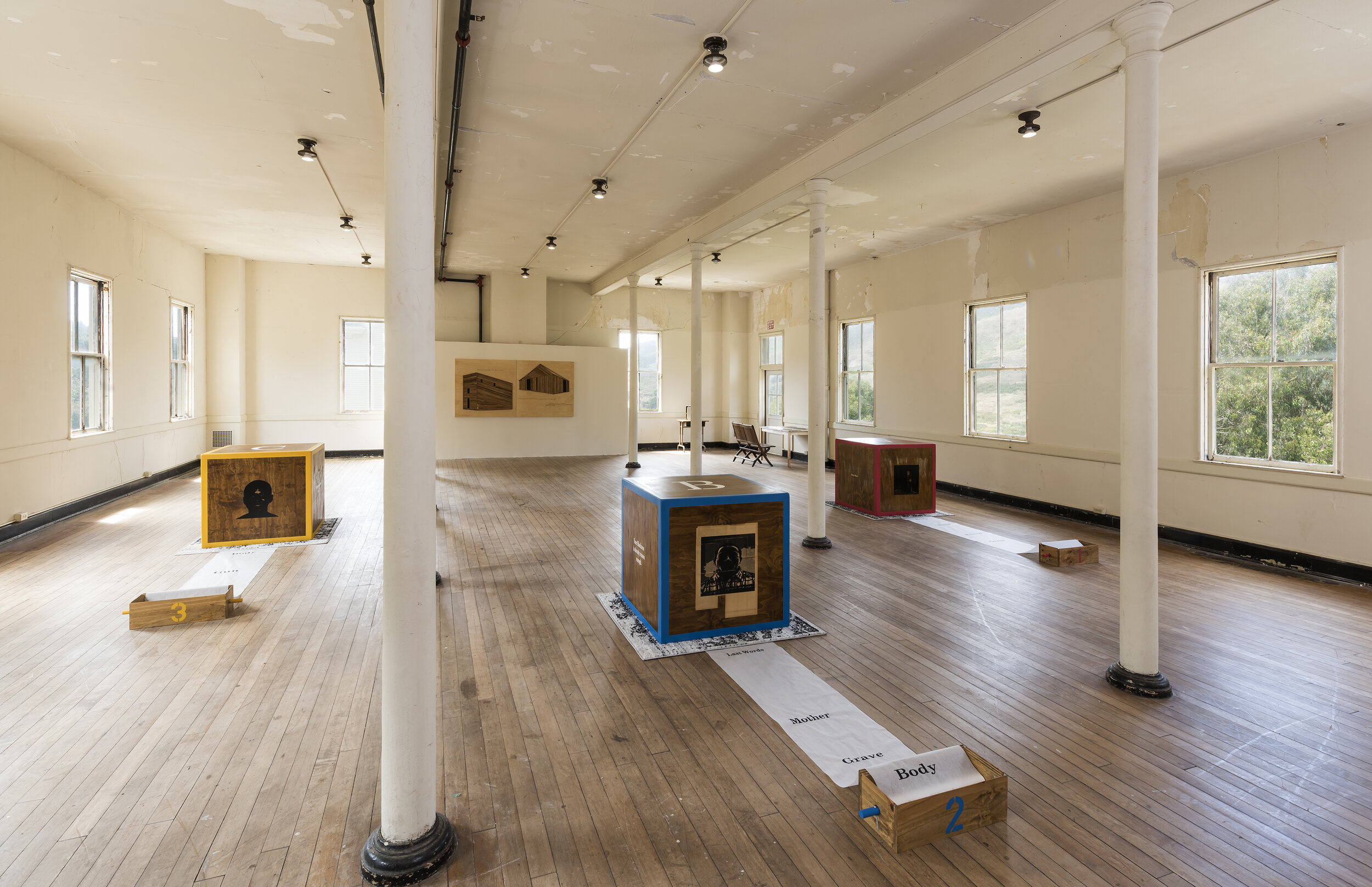
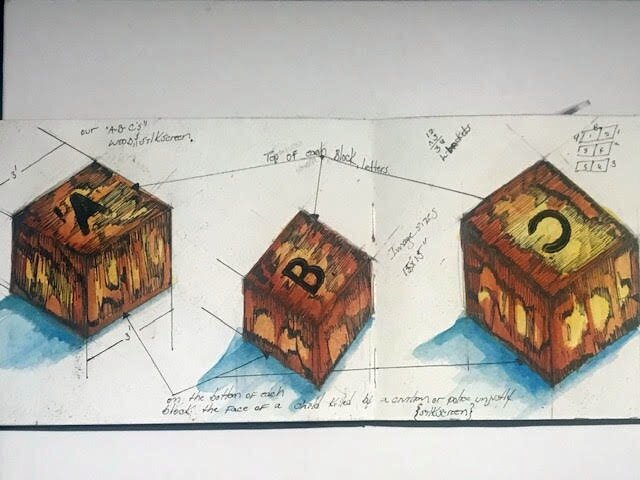
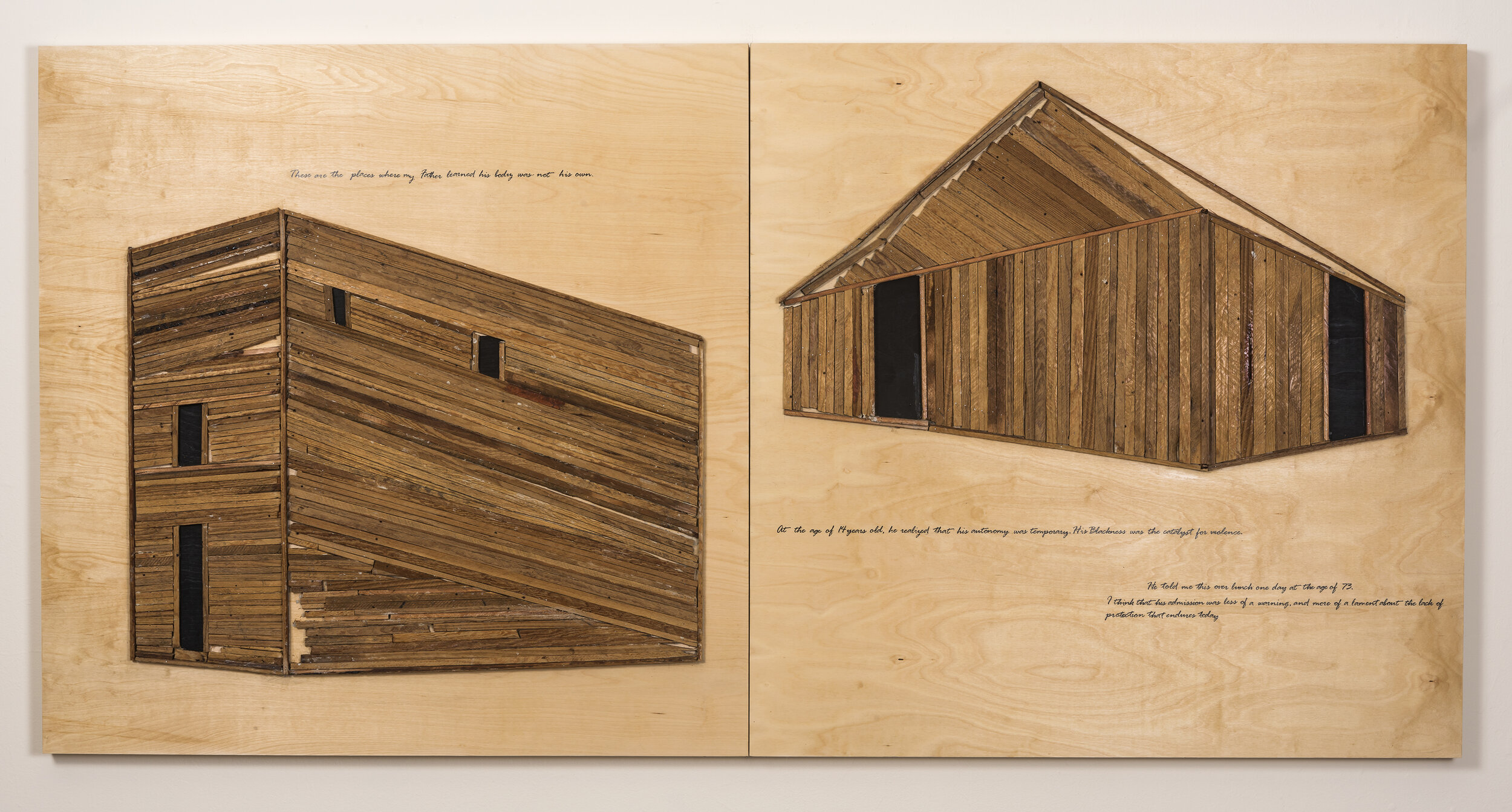
Can you explain the process and meanings behind your recent Shelter in Place works? How did this series begin?
The Shelter in Place works, first began as a way to keep myself busy during the quarantine. I’m pretty lucky because my studio is about 1000 ft. from where I live, so I was able to easily move between the spaces. I had a project in mind that started with vintage ledger paper, and I started to experiment with using silkscreens from previous projects to see if I could create new compositions that spoke to many of the themes that I am concerned with, such as identity, history, and diaspora.
Invisible Cities, 29.5” x 34.25”
Do you have any advice for artists making work that addresses current and/or historical political, cultural and social landscapes?
My advice would be to be sincere in your approach, research the subject thoroughly, and keep in mind that the subject/project should be larger than the artist.
Homelands, 20.75” x 38.5”
How can people support your work?
Great question…I think one of the best ways for people to support my work is if people are in a position present or recommend my work to curators or gallerists, or other arts professionals, please do so. I am a big proponent of artists as a community helping each other whenever possible. People collecting my work is not a bad way either, but not always necessary. Sending encouragement is always appreciated!
